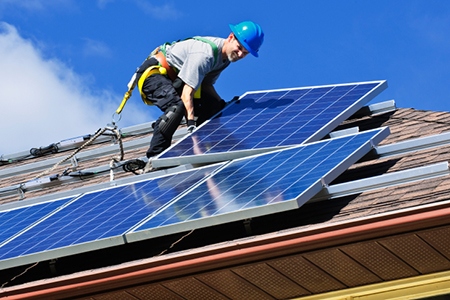 In an effort to “scale up” solar, the Obama Administration recently announced an initiative that will result in lower household energy bills and job growth in the clean energy sector. The initiative, unveiled by the White House earlier this week, will primarily benefit renters and low- and moderate-income communities.
In an effort to “scale up” solar, the Obama Administration recently announced an initiative that will result in lower household energy bills and job growth in the clean energy sector. The initiative, unveiled by the White House earlier this week, will primarily benefit renters and low- and moderate-income communities.
Centered on the launch of a national partnership, the initiative is backed by more than $520 million in independent commitments and a 260-plus project commitment by housing authorities and other organizations in more than 20 states.
The initiative addresses homeowner cost concerns in part through action by the Federal Housing Administration (FHA), which will ease access to funds up to $25,000 for energy-efficient improvements, including solar upgrades. To achieve this, the FHA has already clarified its first mortgage policy, and will restructure its second mortgage program so that homeowners may choose how to remit funds to contractors, and make contributions to lower interest rates or cut out-of-pocket costs. FHA underwriting standards will also become more flexible.
Additionally, the initiative seeks to outfit federally subsidized housing with renewable energy, installing 300 megawatts of solar (and other types of renewable energy) by 2020. To accomplish this goal, the Department of Housing and Urban Development (HUD) will provide technical assistance to affordable housing organizations through a new website, and will release a toolkit outlining steps to secure Section 108 Community Development Block Grant funds for energy-efficient projects.
States will also have access to a guide provided by the Department of Energy (DOE) and the National Renewable Energy Lab with information on developing community solar programs and implementing shared solar policies.
On the jobs front, the Obama Administration expects to prepare over 75,000 Americans (including military personnel) to enter the solar industry by 2020. Steps to realize this goal include a joint venture with AmeriCorps to help low-income individuals secure employment, and an eight-part webinar series hosted by the DOE.
As of 2014, over 500,000 homes across the country have solar installations. Their value is not lost on homebuyers, who, according to a recent DOE report, are willing to pay more for both new and existing solar-powered properties.
To learn more about the initiative, click here.











